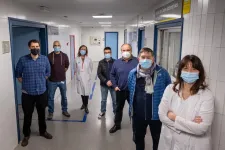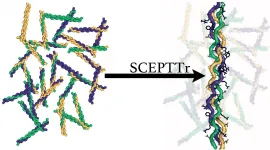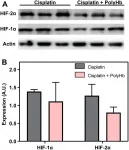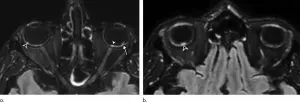(Press-News.org) For more than a decade, governments in countries across the world have made significant progress to expand their protected areas network to conserve the planet's biodiversity. According to a new study published in the journal Global Change Biology, the locations of these protected areas do not take into account the potential long-term effects of climate change in these protected areas.
Creating and managing protected areas, such as national parks, is key for biodiversity conservation. As the climate changes, however, species will disperse in order to maintain their specific habitat needs. Species that were in protected areas 10 years ago may move to an area outside the protected zone that matches the temperature or the food diversity they need to survive.
Accurately predicting where species will migrate in a changing climate is difficult. Instead, researchers with the National Institute for Mathematical and Biological Synthesis (NIMBioS) and the University of Tennessee Department of Ecology and Evolutionary Biology (EEB) decided to look at how much land is available outside the protected areas that could potentially serve as new protected areas for biodiversity conservation.
They conducted the first global, country-level assessment of three key land prioritization approaches countries could use to expand their protected areas network to maintain biodiversity under climate change. The results do not bode well for protecting biodiversity and species habitat needs in a changing climate.
"We studied locations that will likely be most valuable to biodiversity as the climate changes, but found that most countries did not appear to target these types of lands for protection," said Luis Carrasco, lead author of the study.
Researchers looked at the amount of new protected areas located in regions where climate change is projected to be slower; areas where the terrain can shelter a high number of species; and areas that increase connectivity between protected areas, which allows species to move between them to escape adverse climatic conditions.
"Deciding where to place new protected areas is very complex, but ignoring areas that are likely to help protect biodiversity under climate change is risky, as we are not sure whether current protected areas can adequately cover the future distribution of biodiversity," Carrasco said.
Researchers also looked at the potential of each country to add protected areas in lands that might maintain high levels of biodiversity in the future.
"We discovered that 94% of the countries in our study have a high potential for better protecting lands where climate is changing slowly and can act as a refuge for biodiversity, lands with high topographic diversity, or lands that increase connectivity," said Xingli Giam, EEB assistant professor and the senior author of the study. "We hope that countries can use our findings to identify opportunities to improve their climate adaptation strategies for preserving biodiversity in the long term."
The authors caution that other approaches to protect biodiversity under climate change exist, but these approaches were not the foci of their work. Their study suggests that countries have not fully harnessed the potential of protected areas to protect biodiversity against climate change.
"A wide variety of strategies to locate and manage protected areas are currently being developed," Carrasco said. "We are very hopeful that these strategies will be widely implemented during the next decade."
INFORMATION:
Almost half the patients admitted to an intensive care unit (ICU) require invasive mechanical ventilation (IMV), a medical procedure that guarantees a sufficient supply of oxygen to their organs and tissues. The therapy involves connecting patients to a machine that substitutes their spontaneous breathing. In recent months it has been in general use in intensive-care patients affected by COVID-19.
Although it can often save a patient's life, invasive mechanical ventilation is not risk-free: there can be accidental injury during intubation or extubation or the muscles ...
A NEW study from the University of Chichester has shed light on how people coped psychologically with the sudden and life-changing disruption caused by COVID-19.
This new publication, by Chichester's Professor Laura Ritchie and PhD candidate Benjamin Sharpe, in collaboration with Professor Daniel Cervone of the University of Illinois at Chicago, provides a unique snapshot into people's understanding of their goals and self-beliefs amidst a shared, unexpected alteration of the daily landscape during lockdown.
Ritchie and colleagues collected their ...
HOUSTON - (Feb. 15, 2021) - Collagen is the king of biological proteins, and now it has a SCEPTTr.
That's the handle of an algorithm developed by Rice University scientists who study natural and synthetic versions of collagen, which accounts for about a third of the body's proteins and forms the fibrous glue in skin, bones, muscles, tendons and ligaments.
The program -- full name, Scoring function for Collagen-Emulating-Peptides' Temperature of Transition -- accurately predicts the stability of collagen triple helices, the primary structure that forms fibrils.
The Rice team led by chemist and bioengineer Jeffrey ...
According to some estimates, chronic pain affects up to 40% of Americans, and treating it frustrates both clinicians and patients--a frustration that's often compounded by a hesitation to prescribe opioids for pain.
A new study from the University of Michigan School of Dentistry confirms that a low dose of a drug called naltrexone is a good option for patients with orofacial and chronic pain, without the risk of addiction, said first author Elizabeth Hatfield, a clinical lecturer in the Department of Oral and Maxillofacial Surgery and Hospital Dentistry.
Naltrexone is a semisynthetic opioid first developed in ...
HOUSTON - (Feb. 15, 2021) - Rice University engineers have suggested a colorful solution to next-generation energy collection: Luminescent solar concentrators (LSCs) in your windows.
Led by Rafael Verduzco and postdoctoral researcher and lead author Yilin Li of Rice's Brown School of Engineering, the team designed and built foot-square "windows" that sandwich a conjugated polymer between two clear acrylic panels.
That thin middle layer is the secret sauce. It's designed to absorb light in a specific wavelength and guide it to panel edges lined with solar cells. Conjugated polymers are chemical compounds ...
Researchers from the University of Southampton and Université Laval, Canada, have successfully measured for the first time back-reflection in cutting-edge hollow-core fibres that is around 10,000 times lower than conventional optical fibres.
This discovery, published this week in The Optical Society's flagship Optica journal, highlights yet another optical property in which hollow-core fibres are capable of outperforming standard optical fibres.
Research into improved optical fibres is key to enable progress in numerous photonic applications. Most notably, these would improve Internet performance ...
Oncotarget recently published "Polymerized human hemoglobin increases the effectiveness of cisplatin-based chemotherapy in non-small cell lung cancer" which reported that unfortunately, a significant portion of NSCLC patients relapse due to cisplatin chemoresistance.
Administration of hemoglobin-based oxygen carriers is a promising strategy to alleviate hypoxia in the tumor, which may make cisplatin more effective.
The R-state PolyHb administered in this study is unable to deliver O2 unless under severe hypoxia which significantly limits its oxygenation potential.
In vitro sensitivity studies indicate that the administration of PolyHb increases the effectiveness of cisplatin under ...
BOSTON -- While PCR testing has been used widely for COVID-19 diagnosis, it only provides information on who is currently infected. Antibody testing can tell who has been previously exposed to SARS-CoV-2, the virus that causes COVID-19, a metric that is essential for tracking spread across a population. It may also, as a study recently published in the journal Nature Communications shows, hold the key to understanding the immune response to the virus.
Led by Galit Alter, PhD, Core Member of the Ragon Institute of MGH, MIT and Harvard, this study found that while antibodies against SARS-CoV-2 may be a good way to measure exposure to the virus, their presence alone wasn't enough to determine if a person had long-lasting protection. Instead, antibody effector functions associated ...
OAK BROOK, Ill. - Radiomics--the extraction of very detailed quantitative features from medical images--provides a refined understanding of how cocaine use and other risk factors affect the course of coronary artery disease, according to a study published in Radiology. Researchers said the study shows the power of radiomics to improve understanding of not just cardiovascular disease, but cancer and other conditions as well.
Coronary artery disease typically develops over time as plaque builds up inside the arteries. This process, known as atherosclerosis, ...
OAK BROOK, Ill. - Researchers using MRI have found significant abnormalities in the eyes of some people with severe COVID-19, according to a study published in the journal Radiology. The study results support the need for eye screening in these patients to provide appropriate treatment and management of potentially severe ophthalmological manifestations of COVID-19.
The COVID-19 pandemic has affected more than 100 million people since it began early in 2020. While the virus primarily attacks the lungs, it has been linked with eye abnormalities ...







